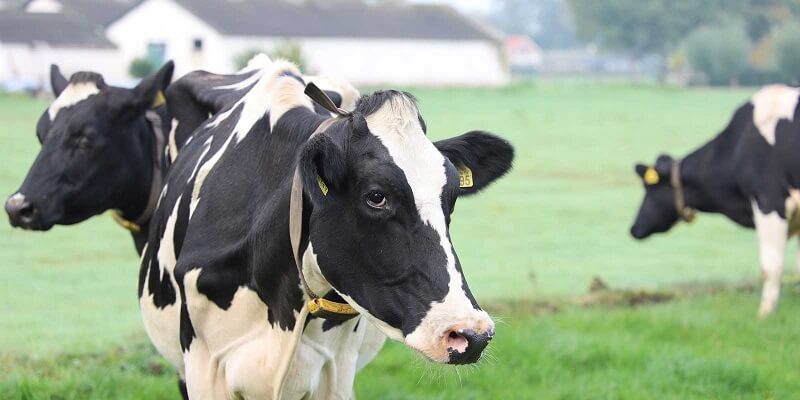Innovate your dairy processing operations. Dairy processors across the U.S. are regularly developing new product lines (e.g., high‑protein dairy, lactose‑free, enriched yogurts), advanced production processes (pasteurisation, ultra‑filtration, membrane separation), and packaging/storage techniques — many of these activities qualify for the federal R&D Tax Credit under IRC §41, with additional opportunities at the state level.


Examples of qualifying activities in dairy processing
- Membrane & Filtration Process Development Testing new ultrafiltration, microfiltration or reverse‑osmosis systems to concentrate whey protein, remove lactose or enhance yield.
- Product Formulation & Specialty Dairy Lines Developing lactose‑free milk, high‑protein dairy drinks, reduced‑sugar yogurts, probiotic‑enhanced cheese or functional dairy beverages.
- Shelf‑Life & Packaging Innovation Experimenting with aseptic packaging, high‑barrier pouches, extended‑shelf dairy tubs, or cold‑chain optimized containers to preserve flavor/texture and reduce spoilage.
- Automation & Process Efficiency Implementing new clean‑in‑place (CIP) systems, robotic loading/unloading, sensor monitoring for microbial levels, advanced monitoring/control of fermentation or curd‑cutting processes.
- Sustainability & By‑Product Utilisation Trialling systems to recover whey protein, convert lactose into value‑added ingredients, optimize energy use in pasteurisation or drying systems, or capture and reuse process heat.
What qualifies as R&D in Dairy Processing?

To qualify, your dairy‑processing activities must:
- Pursue a permitted purpose such as a new or improved dairy product (e.g., protein‑enhanced milk, lactose‐reduced cheese), a novel process (e.g., ultra‑filtration, enzymatic separation), or a packaging/storage method (e.g., extended shelf‑life dairy pouches).
- Address technical uncertainty — for example: “Will the new membrane filtration process maintain protein yield while reducing energy consumption?”, “Can we produce yogurt with the same taste/texture but eliminate added sugar?”, “Can the new packaging maintain quality under distribution‐chain temperature fluctuations?”
- Follow a process of experimentation — lab‑scale trials, pilot‑plant runs, comparisons of alternative processes/materials, iteration of processing parameters, shelf‑life and stability testing.
- Be technological in nature, grounded in food science, dairy chemistry, membrane engineering, microbiology, or packaging/storage engineering.
Qualified Research Expenses (QREs)
Roles commonly involved in qualifying activities
- Dairy product/process development scientists
- Packaging engineers specialising in dairy applications
- Automation/control engineers monitoring process variables
- Pilot‑plant technicians handling scale‑up trials
- Quality Assurance/R&D technicians conducting microbial/stability testing
- External labs or consultants testing membranes, ingredients, packaging materials
What does not qualify
- Routine production of dairy products without experimentation or improvement (e.g., making standard yogurt the same way every day).
- General management, sales, marketing, or administrative functions.
- Applying an existing process without change or innovation (e.g., simply producing more of the same product).
- Land acquisition, facility expansions or standard machine purchases not tied to a research or experimental program.
Compliance and Documentation
Following the One Big Beautiful Bill Act (OBBBA) signed July 4, 2025, §174 now allows immediate expensing of domestic research expenses for tax years beginning on or after January 1, 2025. Taxpayers may also elect optional amortization under new §174A. Foreign research expenses must still be amortized over 15 years. This is separate from the §41 credit but impacts overall tax planning.
Document your dairy processing R&D by maintaining:
- Project‑specific definitions of technical uncertainties (e.g., yield targets, microbial thresholds, energy use reductions)
- Pilot‑plant layouts and run data, procedural iterations, yield/loss statistics, microbial/stability results
- Time‑tracking for R&D and support staff, payroll and wage records tied to the projects
- Material test certificates, packaging or membrane test results, version logs of trials
- Project retrospectives showing how alternatives were evaluated, how problems were solved and how results led to improved processes
Frequently Asked Questions


Yes — if your operation is engaged in researching or experimenting with new or improved dairy products, processing systems, packaging/storage innovations, or sustainability improvements rather than routine production.


Wages of R&D personnel, supplies and materials used in trial runs (new membranes, packaging materials, ingredients), software/tools for analysis, and third‑party contractor/lab costs tied to the experiments.


Examples include: developing lactose‑free milk, improving cheese yield via filtration innovation, creating high‑protein yogurt lines, trialling new aseptic packaging for extended shelf life, implementing new clean‑in‑place automation to reduce downtime or improve hygiene.


Routine manufacturing, standard packaging without change, general labour or production tasks, or simply scaling an existing, proven process without experimentation or technical uncertainty.


Value depends on size of projects, number of years, and documentation. Many food & beverage claims show ~20‑30% of the qualified research expenses (QREs) in credit value when properly identified and documented.


Keep pilot‑run logs, hypotheses describing technical uncertainty, time‑tracking for trial staff, data on yields, process parameters, version logs of membranes/tools, stability and microbial test results, and summaries of experiments including why the method was uncertain and how you addressed it.
Next Steps
Use our calculator to estimate your potential federal and state benefits
Schedule a consultation to structure your row crop research activities
If you are innovating in agriculture, you may already be doing R&D. Let's make sure you are rewarded for it.
Contact Strike Tax Advisory
Ready to maximize your R&D tax credits? Get in touch with our team of experts.

Food & Beverage
With just a little info, our Strike Experts can help you start your R&D tax credit journey.
Got questions?
We’ll walk you through our process and take the time to understand yours to make sure you get the most back.
Schedule a MeetingRelated Sub-Industries
Does your state qualify for the State R&D Tax Credit?
Benefits for the R&D Tax Credit vary from state to state. Get an accurate estimate of your potential state tax credit!






